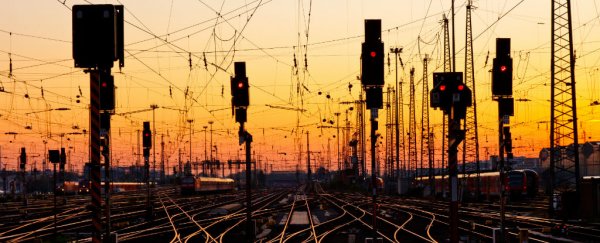The last time there was a solar flare large enough to significantly affect life on Earth, it was the year 1859. Fortunately, our technology wasn't advanced enough to be affected by the massive geomagnetic disturbances caused by the flare, but if something similar were to happen today, the impact could be devastating. So now governments and agencies around the world are scrambling to put precautions in place.
That includes the European Union's Joint Research Centre (JRC): it believes Europe's railways are poorly prepared for another bout of extreme weather from space. Should a solar disturbance the size of the 1859 one happen again, it's estimated that it could bring down crucial navigation and control systems across the continent's railway network, many of which are computerised and automated.
"Railway networks could be affected in case of an extreme space weather event due to direct impact on system components, such as track circuits or electronics, or indirectly via dependencies on power, communications, and progressively on Global Navigation Satellite Systems (GNSS) for timing and positioning," explains the JRC.
In fact, Europe's northernmost countries, including Sweden and Russia, have already experienced rail network problems caused by space weather - perhaps one of the most original excuses you could use for getting to work late. Now the JRC wants to see more done to ensure the local transport infrastructure is prepared for the worst and has extra redundancy built into its networks.
What complicates matters is that solar flares are notoriously difficult to predict. We've already seen some unusually disruptive activity on the surface of the Sun this year, and experts think there's the possibility of another solar storm of 1859 proportions occurring within the next couple of decades. These storms are essentially sudden releases of trapped magnetic energy, and depending on their strength they have the potential to disrupt satellites and communications systems here on Earth.
While we're putting some precautions in place, there's not much we can do right now to stop a huge solar flare from causing extensive damage to our way of life. A report released by the JRC calls for more research into the way Europe's railway infrastructure links together, better backup systems for the existing Global Navigation Satellite Systems, and improved early warning capabilities.
All of this will cost money, of course, but if it protects the rail network from lasting damage, it's a worthwhile investment. In the meantime, NASA and other space agencies are busy working on improved solar flare detection systems so we can get as much warning as possible the next time a super-surge is likely to happen.
